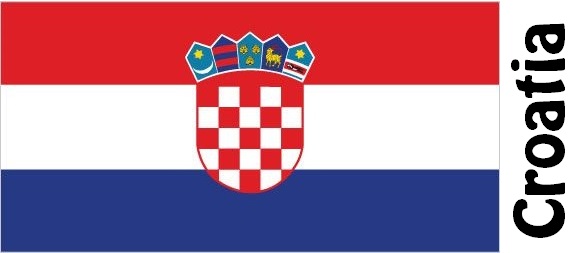Croatia Facts
Croatia, state of the Balkan Peninsula in southeastern Europe; 56,538 km², 4.1 million residents (2019).Croatia borders in the north to Slovenia and Hungary, in the east to Serbia and in the south to Bosnia and Herzegovina and in the west has a long coastline along the Adriatic Sea. The capital is Zagreb (694,000 residents, 2012).

Country facts
- Republika Hrvatska / Republic of Croatia
- Country abbreviation: HR
- Area: 56 538 km²
- Population (2019): 4.1 million residents
- Capital: Zagreb
- Main language: Croatian
- State: Republic
- Head of State: Zoran Milanović (President)
- Head of Government: Tihomir Oresković
- Per capita GDP (2018): US $ 14,861
- GNI per capita (2018): US $ 13,830
- Currency unit: 1 kuna = 100 lipa
- Currency code: HRK
- Country number (telephony): 385
- Internet Domain Name: Mr
- Time difference compared to Sweden: 0
- National Day: June 25 (Independence Day, 1991)
Nature
- Land use: forest (37%), agricultural land (22%), other (41%)
- Highest mountain: Dinara (1,831 m asl)
Population
- Population density (2019): 72 residents per km²
- Natural population growth (2019): −0.4%; birth number 9 ‰, death number 13 ‰
- Age structure (2019): 0-14 years (14%), 15-64 (66%), 65- (20%)
- Average life expectancy (2019): men 75 years, women 81 years
- Infant mortality (2019): 4 per 1,000 live births
- Population forecast 2050: 3 million residents
- HDI (2017): 0.831 (place 46 of 189)
- Urbanization rate (2019): 57%
- Most populous cities (2012): Zagreb (694,000 residents), Split (175,700), Rijeka (144,300)
Business
- Industry’s contribution to GDP (2017): agriculture (4%), industry (26%), service (70%)
- Exports (2017): US $ 13,150 million
- Main export products: means of transport, machinery, textiles
- Main exporting countries: Italy, Germany, Slovenia
- Imports (2017): US $ 22,340 million
- Main import products: machinery, means of transport, chemicals
- Main importing countries: Germany, Italy, Slovenia
- Railway network (2014): 2 700 km
Croatia consists of a highland in the north around Zagreb, the Dalmatian coastal country to the west and the eastern inland plains of the Pannonian basin. Of the various natural regions, the East has a more continental climate than the rest of the country.
The legislative power of the country is exercised by Parliament, which has two chambers: the Chamber of Deputies and a Chamber representing regional units. Both are directly elected and have a term of office of four years. The executive power belongs to the president and the government. The president, who is directly elected for five years, holds a strong position. In 1991, Croatia declared itself independent.
After World War II, Croatia developed from an agrarian state of modest industry to a partially modern industrial state. The war in former Yugoslavia hit the country’s economy hard. The previously important tourism industry was the sector most affected by business, but industry and infrastructure were also affected. In the 2000s, industry and tourism have recovered, but the external debt and the deficit in the state budget are still large.
Croatia Map














































